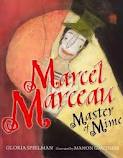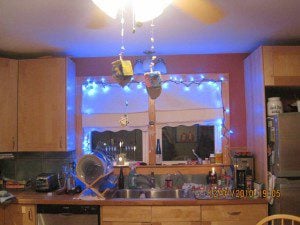Now that I teach full time, a lot of my best “parenting'” work happens with other people’s children. I’m not sure what that might mean for the future of homeshuling (school-shuling just doesn’t have the same ring to it) but I thought I’d share a blog post from my Gan blog. I think this activity could be just as successful at home as it was in my classroom.
When I began teaching young children I made a vow that I wouldn’t do “cookie-cutter” art projects – those notorious items that kids tote home from pre-school and kindergarten that all look exactly the same. I’m not the least bit artistic. However, I had the good fortune of taking an art education class in graduate school with Cathy Topal, co-author of the amazing book Beautiful Stuff, and to take a two-day teacher workshop in the art studio at the Eric Carle Museum of Picture Book Art, both of which helped me figure out how to set up a classroom and design activities that would support creative, open-ended art-making.
Sometimes, of course, cookie cutter projects are designed that way in order to reinforce a particular teaching point, and are a perfectly good use of student’s time and energy. One example is the pasta rendition of the life cycle of a butterfly. Yes, every child’s looked more or less exactly the same, but it was a fun way to assess their understanding and recall of the central idea of our monarch butterfly unit, and to send them home with an artifact of the unit. I just didn’t consider it art, really.
This Hanukkah, I wanted to create a lesson that was both open ended but also reinforced one of the learning goals for Kindergarten – understanding that the definition of a kosher hanukkiyah – that a Hanukkah candelabra has eight branches of equal height and one, the shamash, that is either higher or lower that the rest. (While children make and decorate their own salt dough hanukkiyyot, that activity isn’t really suitable for concretizing the “all the same height” idea, because it’s almost impossible for Gan children to acheive this result with salt dough. Which, of course, begs the question – should I rethink the medium for that activity?)
I decided to have the children make collage hanukkiyot, drawing from some of the wide range of materials that live on our art shelves. However, instead of making the collages completely open-ended, I draw pencil lines for each of the eight branches, in order to ensure that they would, in fact, be even. I also drew a tall shamash, but let children know that it was fine to make their shamash lower, instead of higher, if they preferred.
I was really delighted with how the project turned out. We started with these materials
Children visited the materials table, and chose items to explore. I set very few parameters – they had to use at least two materials, and no more than 9 pom poms (simply because I didn’t want to run out and suspected they would be very popular.) Also, they couldn’t have glue until they had tested out a few arrangements on their cardboard.
Children could choose between Elmer’s glue in a tube and our mini-tubs of glue with brushes. They worked independently to attach the materials. Some students finished in half an hour or so, and some worked for close to an hour. I think you can see how hard they are concentrating!
And I loved the end results – don’t you?
In an ideal world (or a world with 4-5 extra hours a day) the children would also discuss and perhaps write about or draw their own collages. Even without these follow up activities I think both the project and the display accomplished what I set out to do – teach a lesson using art without any cookie-cutting.

